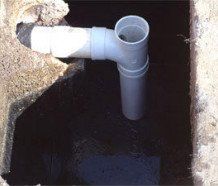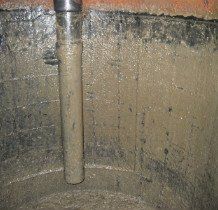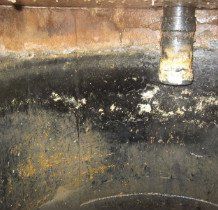EDUCATION
EDUCATION
What is a Septic System
A septic system is a highly efficient, self-contained, underground, wastewater-treatment system. Septic systems operate on a simple principal: water in; water out. If you flush six gallons down the drain, six gallons will immediately leave the tank and travel to the leach field. Because miles of sewer lines are not needed, on-site systems are less disruptive to the environment. They are less costly to operate than the large municipal treatment plants and also more efficient.
A septic system consists of two main parts: a septic tank and a leach field. The septic tank is a water-tight tank and generally is made of concrete or fiberglass. Wastewater flows from the house to the tank. The tank treats the wastewater by holding it in the tank long enough for the solids to settle out of the effluent (water) and fall to the bottom of the tank. This is called “sludge”. The solids that are lighter than water (grease, oil, laundry lint, and garbage) remain floating on the top. This is the “scum” layer. The middle layer, which usually takes up most of the volume of the tank, is called “effluent”. It is a layer of cloudy water that flows into the leach field. The layers of scum and sludge remain in the tank where enzymes and bacteria work to break them down. The scum and sludge that cannot be broken down, remain in the tank until the tank is cleaned and pumped.
When the cloudy water leaves the septic tank, it travels to the leach field. It flows from one pipe to a series of perforated pipes that take the water and distribute it to the field. The trenches are 5ft and deeper. They are filled with rock. The rock serves no purpose other than to hold the trench open. The water trickles down through the rock to the bottom of the trench. Millions of microbes work to process the pathogens (bacteria and viruses), thus breaking down the organic matter. The water is purified and returns to the aquifer.
Septic Tanks Cast in the 1970s
There are areas in Sierra Vista and surrounding towns that have had septic systems installed in the 1970s. Most all systems installed in this decade have cast-on concrete inlet and outlet baffles. The outlet baffle deteriorates over the years from the hydrogen sulfide gas produced by the bacteria as they eat. This allows the scum on the top of the water to be taken into the leach field. If this is occurring, your system is doomed to fail unless these baffles are replaced. It is not necessary to replace the septic tank. There is a 95% chance that your baffle is deteriorated. This is why it is SO IMPORTANT TO have your tank pumped and inspected periodically. You don’t have to sit and wait for it to fail – take action. Out of sight-out of mind or “I have never had any trouble” is not the approach for preservation of your most costly system on the property.
Septic Tanks Cast in the 1980s and 1990s
Tanks cast in the 1980s have an extended outlet tee baffle. These extensions usually are only 10 or 12 inches from the floor of the tank. The sludge is gathered up at the outlet end of the tank and it prevents normal flow out of the tank. Care must be taken when pumping the tank to clear this sludge and fully pump the tank.
Tanks cast in the 1990s are two-chambered. The inlet tee baffle is missing the extension on the tee. This allows scum to build up sooner and block the inlet, causing a back up in your home.
If you are experiencing any problems with your septic system, please call the professional at American Septic Service right away.
Education
Are you protecting the Aquifer?
"Improving Arizona's Inspection Procedures to Meet Modern Challenges"Indianapolis EXPO February 2014
Nashville Presentation
Tank Tells the Tale
It's All About the Tank
Final Crypts Version
WWETT ExpoIndy February 24, 2015
True Crime Stories How to Inspect and Troubleshoot Suspect Onsite Systems
MIC 2013
Mic 2013
from DawnLong18



